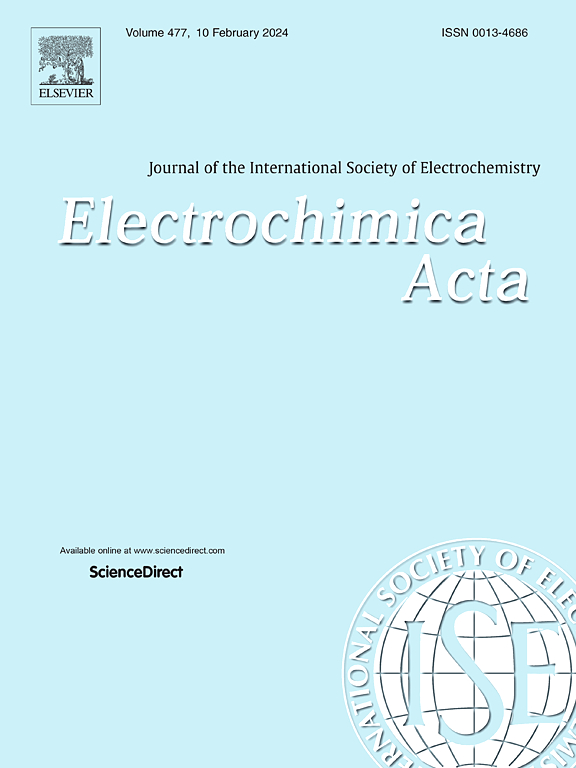用于高性能钠离子电池的分层 Co3O4 阳极
IF 5.5
3区 材料科学
Q1 ELECTROCHEMISTRY
引用次数: 0
摘要
尽管钠离子电池的理论熵值极高,但它尚未发展成为当前锂离子技术的可靠替代品,主要原因是缺乏高容量、长循环电极。在各种候选钴(II,III)氧化物(Co3O4)中,Co3O4 因其多电子转换类型的性质而有望提供出色的电化学特性,但由于电极导电性差和体积波动相关的不一致性,其性能通常不尽如人意。在此,我们报告了 Co3O4 纳米结构的形态和结晶度工程,以大幅提高电荷存储和循环性能。通过高度可重复性和工业可行性的方法合成的大面积相互连接的分层 Co3O4 在脱氧/钠化循环中表现出高效的电荷传输动力学和出色的体积膨胀缓冲能力。凭借其独特的结构特性,纳米片电极具有出色的可逆容量(理论极限的 70% @25 mAg-1)、速率性能(123 mAhg-1 @ 1Ag-1)和稳定的循环性能(250 次循环后的 82% @ 1Ag-1)。对电极反应的原位拉曼分析表明,在分层型电极中存在转化型钠离子存储。本文章由计算机程序翻译,如有差异,请以英文原文为准。
Hierarchical Co3O4 anode for high-performance Na-ion battery
Despite excellent theoretical perditions, sodium-ion batteries have not yet evolved as a reliable replacement of current lithium-ion technology, mostly due to a lack of high capacity-long cycling electrodes. Among the various candidates cobalt(II,III)oxide, Co3O4, is expected to deliver an excellent electrochemical characteristics, owing to its multi-electron conversion type nature, however, usually fails in terms of performance due to the electrode inconsistencies, associated with the poor conductivity and volumetric fluctuations. Herein, we report morphology and crystallinity engineering of the Co3O4 nanostructure to substantially improve the charge storage as well as cycling performance. Largely interconnected hierarchical Co3O4 synthesized via highly reproducible and industrially viable approach demonstrated efficient charge transport kinetics and excellent volume expansion buffering under the de/sodiation cycles. With its unique structural properties hierarchical electrode delivered an excellent reversible capacity (70 % of theoretical limit @25 mAg-1), rate performance (123 mAhg-1 @1Ag-1) and stable cycling (82 % after 250 cycles @1Ag-1). In-situ Raman analysis of the electrode reactions revealed conversion type Na-ion storage in the hierarchical type of electrodes.
求助全文
通过发布文献求助,成功后即可免费获取论文全文。
去求助
来源期刊

Electrochimica Acta
工程技术-电化学
CiteScore
11.30
自引率
6.10%
发文量
1634
审稿时长
41 days
期刊介绍:
Electrochimica Acta is an international journal. It is intended for the publication of both original work and reviews in the field of electrochemistry. Electrochemistry should be interpreted to mean any of the research fields covered by the Divisions of the International Society of Electrochemistry listed below, as well as emerging scientific domains covered by ISE New Topics Committee.
 求助内容:
求助内容: 应助结果提醒方式:
应助结果提醒方式:


